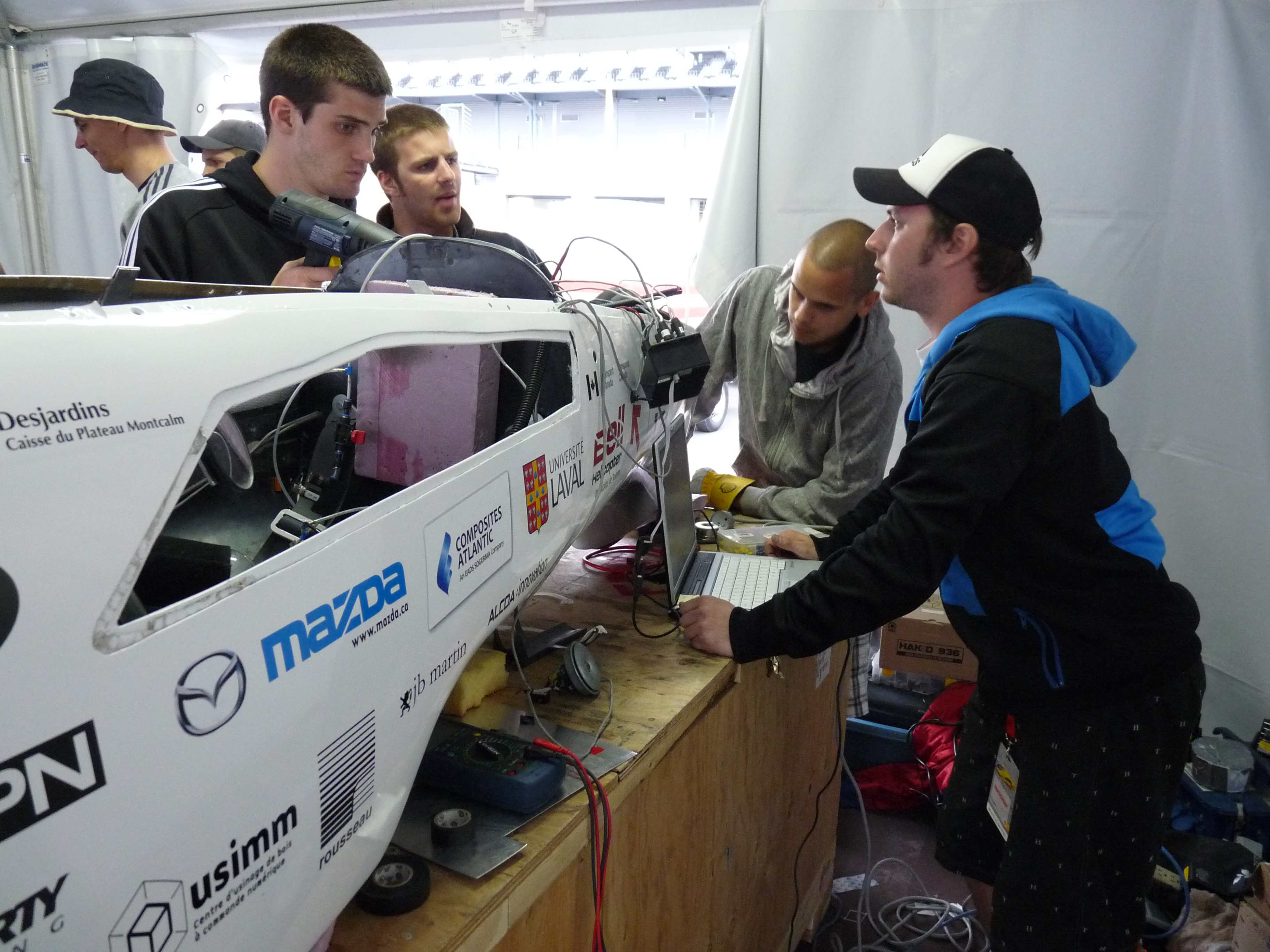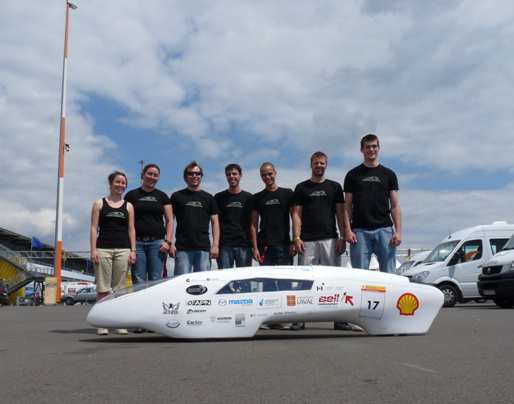The second day started with a very cold weather and strong winds. Hence, the team decided to continue to work on the car, waiting for a more clement weather to attempt a run. In the afternoon, we decided to go for a run, despite of the wind still present. It went really smooth and we were eager for a good performance. However, the result was less than the first run with 27 ml consumed for a result of 880 km/l. This deceiving result was showing a problem with the engine that required too much time to accelerate. After a few modifications in the ECU, we decided to attempt a last run before the closure of the track. Several teams thought the same way, resulting in a very crowded attempt where our driver had to deal with sometimes as many as 15 vehicles in her field of vision, making her job very difficult, particularly in the chicanes. Since we didn’t have time to change much on the engine, the result was pretty much the same as the first one of the day with 29 ml consumed for 858 km/l.

Disappointed about the results of the day, the team spent the rest of the day, as well as most of the night to figure out what was wrong with the engine. We finally noticed a mechanical problem making the reading of sensors on the cam shaft and the crank shaft incorrect. After reparation, the engine seemed to have regained its real performances.
A short night of sleep and we were back on the competition site, in the line for the opening of the track. Many teams had the same idea of waking up early in order to be the firsts. Moreover, the organizers of the competition had decided, surprisingly, to make everybody pass the braking test again, following an incident the day before. This addition was making the process really long. We had until 1 p.m to register 1 or 2 runs. However, when it was our turn to pass the braking test, the judge decided that our braking was insufficient, despite of the fact that the vehicle was holding still on the inclined slope. Some air bubbles must have leaked in the line during the last 2 days, making it less efficient. We knew what we had to do to overcome this problem, which was done really fast, but by that time, the engine was starting to fail again. The reparations of the previous night were not perfect and we needed tools that were not at our disposition on the competition site. We didn’t have time to repair it like we had done the night before, and hence were not able to attempt any more run before the closing of the track. The team was really disappointed of not being able to see the real potential of the vehicle on the EuroSpeedway in Lausitz.

We are still happy of the opportunity that we had to meet the teams in Europe (A particular thank you to Remmi team, from Finland, GAMF team, from Hungary, and Microjoule team from France for their support and their help). Moreover, we were glad to be ranked among the top 15 teams in the competition. On that subject, the team would like to congratulate warmly every teams present at the Shell Eco-Marathon Europe for their performances as well as their realisations. Finally, we would like to thank the company Shell and the organizers of the Shell Eco-Marathon event for giving us the opportunity to participate at the European version of the competition. We had a great time in Lausitz and the organisation was flawless. There is now 2 weeks left before the last competition of the year, the SAE Supermileage, held the 9th and 10th of June in Michigan, USA.